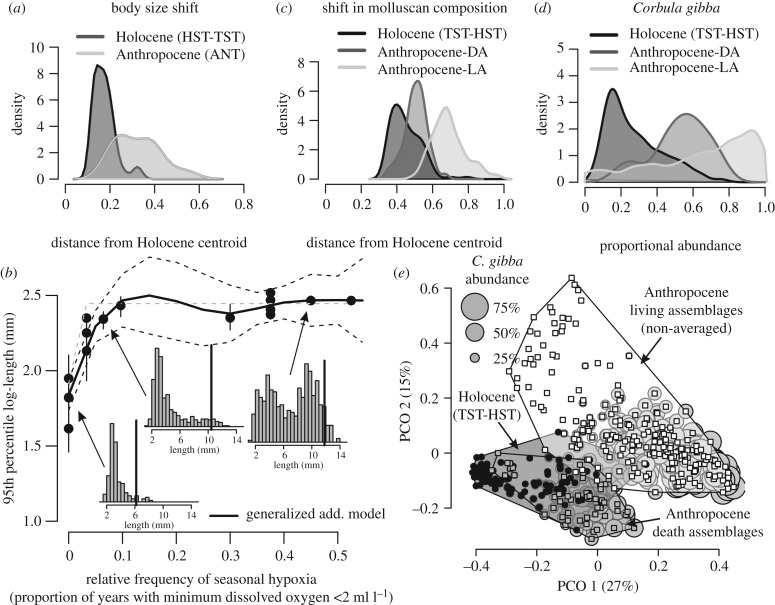Figure 2.
The size and compositional regime shift between Holocene and Anthropocene assemblages and the effect of frequency of hypoxic events on shell size of C. gibba. (a) Density kernels show that the Frechet distances from the Holocene centroid to Anthropocene assemblages (light grey) exceed those between Holocene assemblages and their centroid (dark grey). (b) The relationship between the 95th percentile log-length of C. gibba in DAs (based on specimens with periostracum only) and the relative frequency of seasonal hypoxia between 1980 and 2010 points to an abrupt nonlinear increase in size when a seasonal hypoxic event occurs at least once per decade. (c) Compositional overlap between Holocene and Anthropocene assemblages: density kernels show that the Bray–Curtis distances from the Holocene centroid to Anthropocene living assemblages (LAs; light grey) are larger than those among the Holocene death assemblages (dim grey). Anthropocene death assemblages (DAs; dark grey) have intermediate position. (d) The distribution of C. gibba relative abundance, with less than 20% in Holocene assemblages and greater than 90% in Anthropocene LAs. (e) Genus-level compositional separation between Holocene (TST and HST), Anthropocene DAs and Anthropocene LAs in principal coordinate analysis (PCO). The size of the bubble plots is scaled to abundance of C. gibba relative to abundance of all molluscs.

